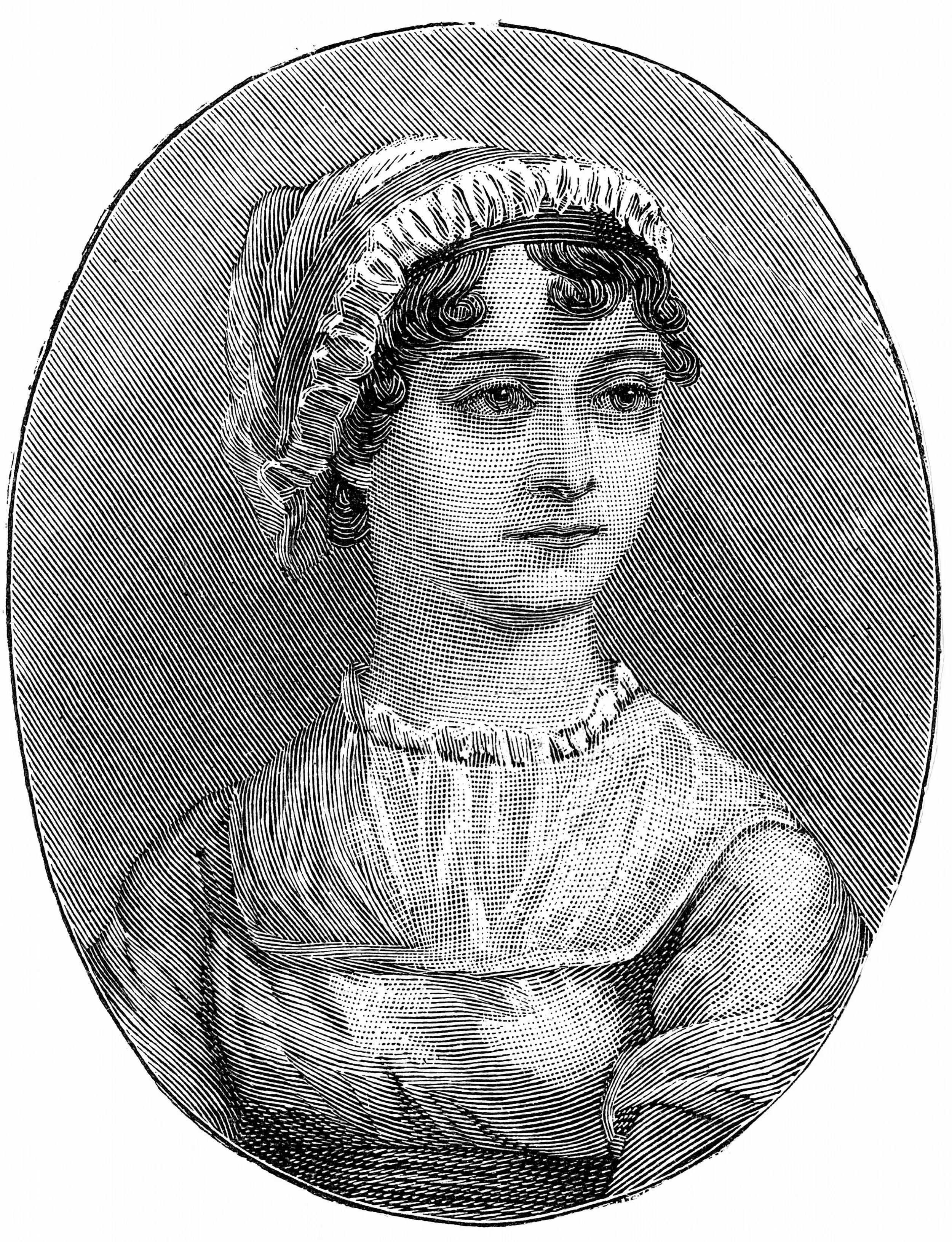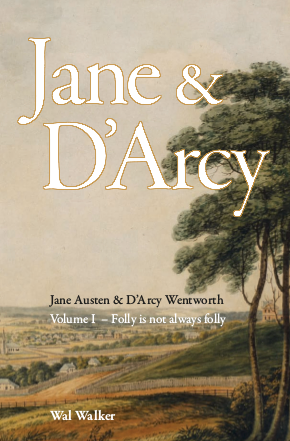Did Jane Austen have a secret, teenage marriage? And what does that have to do with my writing project ‘The House’?
In 2025 Jane Austen fans are frocking up and sipping tea to celebrate her 250th birthday. Many of us will also be watching the new BBC bonnet drama Miss Austen based on the novel by Gill Hornby. The series tells the story of Jane’s sister, Cassandra Austen, and her decision to burn several years’ worth of Jane’s private correspondence after her sister’s death.
Beyond the basic facts, we don’t know much about Jane Austen. We’d know a lot more if more than just 160 of her letters had survived—she wrote thousands of them. Cassandra must have had a reason to burn them, and it was more than likely to protect Jane's—or her family's—reputation.
From the age of 12 when I discovered* the genius of Jane Austen, until this day, she has been number one on my list of people (living or dead) who I’d invite to a dinner party. She’s even more firmly cemented in that place now that I’ve read two books by Wal Walker that put forward the explosive! theory that our Jane, spinster novelist, and subject of much conjecture about her private life, had a secret teenage marriage!
Not only that, but the man she eloped with was none other than D’Arcy Wentworth, the father of William Charles Wentworth, one of my main characters in my writing project ‘The House’.
Yes, Walker says, Jane was much less like Elizabeth Bennett, and ever so much more like Lydia, who ran away to Gretna Green with Wickham at the tender age of 15. I know it’s a huge call, and I know there are plenty of Austen historians and scholars out there who don’t believe it, but I can see how it maybe, just possibly could be true. Here are some of his arguments:
It was known in the Wentworth family line
As a member of the Wentworth family, Walker says that he was once told by his uncle, Bill Wentworth of the romantic connection between D’Arcy and Jane. ‘I remember only that it was given as a simple fact,’ he wrote, and later, ‘This is a story held for several generations of my family.’ While it wasn’t widely talked of, probably so as not to damage Jane Austen, by the early 2000s, Bill Wentworth was of the opinion that 200 years after it all took place, enough time had elapsed for it to be made public, and encouraged Wal to write the story of his grandfather’s great-grandfather, D’Arcy Wentworth.
It could have happened
There’s a period in which Jane and D’Arcy could have met each other—they were both from different branches of the Wentworth family, after all. Walker’s theory is that in 1786 the young Irish surgeon met up with Edward Austen, and his cousin, who are known to have taken Jane and Cassandra, then at boarding school, out for dinner. Perhaps Wentworth entered the inn, sat down and joined the party. Wentworth lived in England until he left for New South Wales in 1790, and Walker shows how it could have been possible for Jane and D’Arcy to be in the same place at the same time for a few months in 1789, when he argues the romance and the elopement took place.
Jane’s writing was too real
For a woman who was said to have never gone anywhere much, never done anything much, and never really had a proper romantic relationship, Walker is of the opinion that her writing is just too good.
‘Where did Jane Austen gain the life experience with which she wrote such complex and realistic stories?’ he said, and, ‘I found it difficult to accept that Jane Austen wrote these stories having never experienced any other life than that of the small, remote rural rectory, in a parish of a few square miles, with a population of a few hundred. Many scenes are so emotionally powerful, one senses she is revealing events from her own life.’
Her early writings hint at rebellion and adventure
Jane’s series of short stories, plays, letters and other pieces which she wrote in her younger years were later published as Juvenilia. Walker believes much of this material is autobiographical, or based on Jane’s own experiences as a younger person; for example, biographers say that Jane only visited London once, and briefly, but Juvenilia is full of descriptions of London and city life, which could hardly have been written based on what she had learned from other people. Walker uses the material to construct a possible series of events.
Cryptic clues in Jane’s life
Jane’s family insisted that she never visited Scotland, which was the destination for all elopements due to their marriage laws, yet in one of her surviving letters, she writes that a certain road ‘put her in mind’ of a place near Edinburgh.
Jane Austen’s father kept records of all marriages he conducted in the Steventon parish register. In the register dated 1755 to 1812, three ‘banns of marriage’ can be found, added in Jane Austen’s tiniest handwriting. The banns read:
The Banns of Marriage between Henry Frederick Howard Fitzwilliam of London and Jane Austen of Steventon
Edmund Arthur William Mortimer of Liverpool and Jane Austen of Steventon were married in this church
The marriage was solemnised between us, Jack Smith and Jane Smith late Austen, in the Presence of Jack Smith, Jane Smith.
Was Jane Smith the name she gave when she eloped with Wentworth?
Clues in Jane’s novels
Jane’s first novel was Sense and Sensibility, where Marianne is jilted from an non-public relationship, leaving her heartbroken to the point of illness and utter despair, and where Elinor cannot tell a soul about her feelings for and attachment to Edward. Walker argues it was a personal, cathartic novel for Austen.
Her next book, Pride and Prejudice, is full of names that are relevant to D’Arcy Wentworth, including, of course, Mr Darcy himself. But there’s also Fitzwilliam, the real-life cousin and mentor of D’Arcy Wentworth; Wickham**, the real-life friend and one-time lodging mate of our D’Arcy, and Bingley, named for a village near real-life Wickham’s home in Yorkshire.
Most revealing, I think, is Jane’s moving novel, Persuasion, where quiet spinster Anne Elliot has one last chance to be united with the love of her childhood, the appropriately named Captain Wentworth, from whom she had been separated as a younger woman by people who had her best interests at heart.
A good reason to hush things up
If Jane and D’Arcy Wentworth did marry, why did it remain a secret?
Here’s where we get to D’Arcy’s adventures as an alleged highway man. Walker paints a picture of a young surgeon, trying to get by on very little money in expensive London. He may have taken up gambling tables as a source of income. This was a common occupation but dangerous because not only could you lose, but not everyone paid up when they lost. Quite possibly, D’Arcy took it upon himself to recover debts owed. He had been arrested, tried and acquitted for highway robbery more than once and his name was known in the papers.
On his third arrest, court records show he was living in London with a woman who said she was from ‘Leigh’ and gave her name as first Wilson, then Weaver, then Taylor. Jane’s mother’s maiden name was Leigh; her father’s cousin was a Mrs Wilson, his half-brother’s wife was Mrs Weaver, and ‘Miss Taylor’ was a family joke.
Soon after Wentworth’s third arrest, trial and acquittal in 1789 (Walker argues this took place very soon after the elopement), he took himself out of England and away from notoriety and sailed to New South Wales with the Second Fleet as a surgeon. Walker argues that Jane had intended to go with him, but when her family heard about their relationship, they persuaded her that the marriage was not legal, and even more importantly, that she should cut off the connection with such a notorious highwayman and save her family’s reputation.
On the day before D’Arcy sailed, Henry Austen published an article applauding the world for ‘getting rid of its superfluous inhabitants, both poets and pick-pockets, prudes and prostitutes, in short all those who have too much cunning or too little money, shipped off with the very first cargo of convict to Botany Bay.’ Perhaps there was a more personal reason for writing this.
For their part, the family would close ranks and close lips on the matter forever. Their continued silence, helped along by Cassandra’s burning of letters, preserved Jane’s dignity and their gentility. Biographers were never able to get deeper than Jane being an exemplary pious figure who lived a quiet life. Virginia Wolfe wrote of Jane Austen: ‘I prefer to present her not in the modest pose which her family determined for her, but rather, as she most frequently presented herself, as rebellious, satirical and wild.’
Could all this be true? Wal Walker certainly believes it.
‘Jane Austen wrote about real people, real episodes, events and conflicts that she disguised as fiction. Over two centuries, sensitive readers and critics have guessed they were dealing with true stories, but they lacked the key to unlock them. Her family kept her secrets closely guarded for generations, somehow preventing critics and historians from probing the key names and events she gave as clues in her novels. D’Arcy, after his few moments of celebrity, disappeared to the other side of the world and never spoke of his past.’
Personally, I’m open to the possibility that it could be real. If Jane Austen had come with D’Arcy Wentworth to New South Wales, imagine the contribution to history she would have made through her letters and writings. Mind you, if this had happened, my story about D’Arcy’s son William and his wife Sarah would be entirely different!
*My personal Jane Austen fandom began when I was given an abridged version of Pride and Prejudice at age 12. It quickly became my favourite book of all time and I took it everywhere, including on holidays to the Karakoram mountains in Pakistan, where we lived at the time. Unfortunately during that holiday it was stolen from our jeep, along with the rest of the tiny shoebox of personal items I was allowed to take. (There was no room for more personal items; we had a family of five and a tiny Suzuki jeep with minimal boot space. My dad, an excellent packer had allocated each person a shoebox for their non-essential things.)
When I lamented the fact that I couldn’t get another abridged book, living in Pakistan, where such things were hard to obtain, my neighbour said, ‘why not just read the real thing?’ She gave me the original version of P&P. I read it, and the stack of other Austen novels she had. When I finished the sixth Jane Austen in a row, I went back to her, asked, ‘do you have the next one?’ and was devastated to hear that Jane had died young and the books I had now read made up the sum total of what she had written. Still, no matter. I read them over and over and over, and each time was as good as the first time.
**Fun fact: this Mr Wickham was the son of a British spy who was apparently the basis for the story, The Scarlet Pimpernel.
My telling of Sarah Wentworth’s story has the working title of ‘The House’. If you’d like to follow along with my progress, I’ll be updating my subscribers regularly, sharing story snippets and research discoveries, and talking through the process of taking on such a project. Sign up below to follow along. And drop me your comments and questions. I’d love to know what you think of the story and the project.
Catch up with the project from the beginning. Here’s the very first post introducing ‘The House’.


